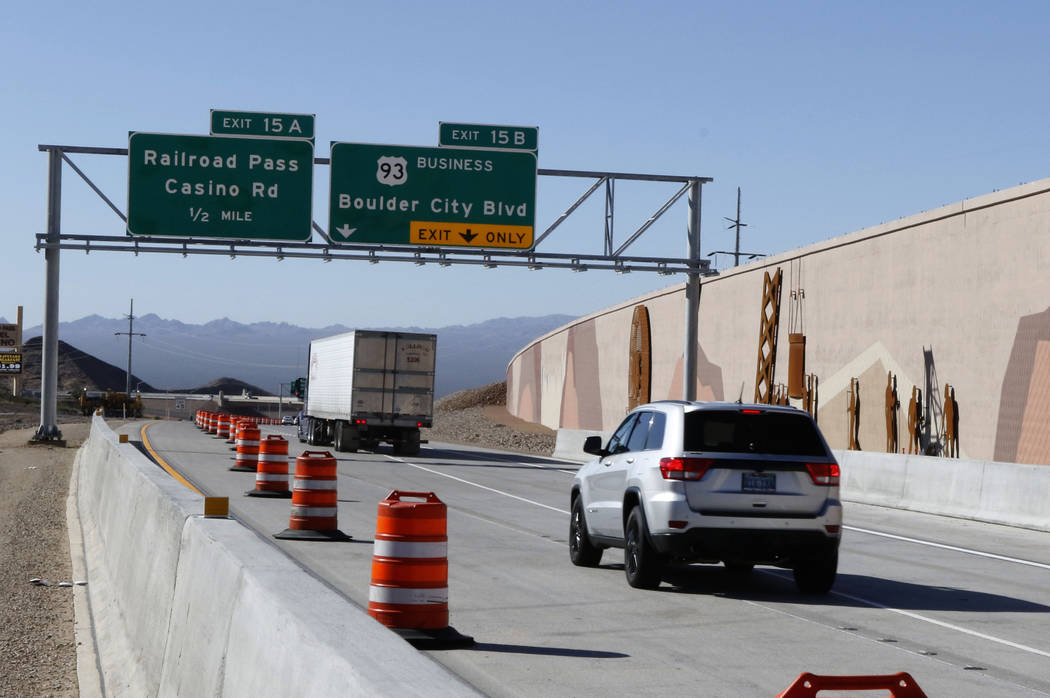
For a second time this year, the Nevada Department of Transportation is going on a road trip to discuss the future of Interstate 11.
Its seven-city tour is aimed at explaining the importance of building the new freeway and gathering public input on where I-11 should be routed north of Las Vegas.
The meetings are being held in the days leading up to the Aug. 9 opening of I-11, spanning 15 miles from Henderson to the Colorado River.
The $318 million freeway segment, known as the Boulder City Bypass, is funded by federal and state money along with Clark County’s fuel revenue indexing tax. Construction started in April 2015, with work split between NDOT and the Regional Transportation Commission of Southern Nevada.
“The future I-11 will not only further connect our state, but the entire West. It will bring enhanced mobility, traffic safety, freight and other opportunities for Nevada,” NDOT Director Rudy Malfabon said.
State and local officials are still figuring out how I-11 should go through — or around — the Las Vegas Valley.
However, state officials already envision I-11 leaving northwest Las Vegas, running along an upgraded version of the current U.S. Highway 95 to Tonopah. From there, NDOT is reviewing four options that call for the use of a mix of existing roads and new traffic lanes leading up to Interstate 80:
■ A westward swing toward Carson City and Reno.
■ Running up through Silver Springs and Fernley.
■ A path through Fallon.
■ An eastern route that would go through Salt Wells.
Those four options were discussed during a series of meetings held across the state in March, NDOT spokesman Tony Illia said. After gathering input, department officials evaluated and ranked each of those choices in an attempt to narrow down their options and streamline the environmental review process.
The results of that evaluation will be presented during the next round of meetings, Illia said.
Envisioned as a trade connection running from the Mexican border to Canada, construction of the 450-mile-long freeway could take decades to build as funding becomes available, NDOT officials said.
See more in the July 13 edition of the Pahrump Valley Times.